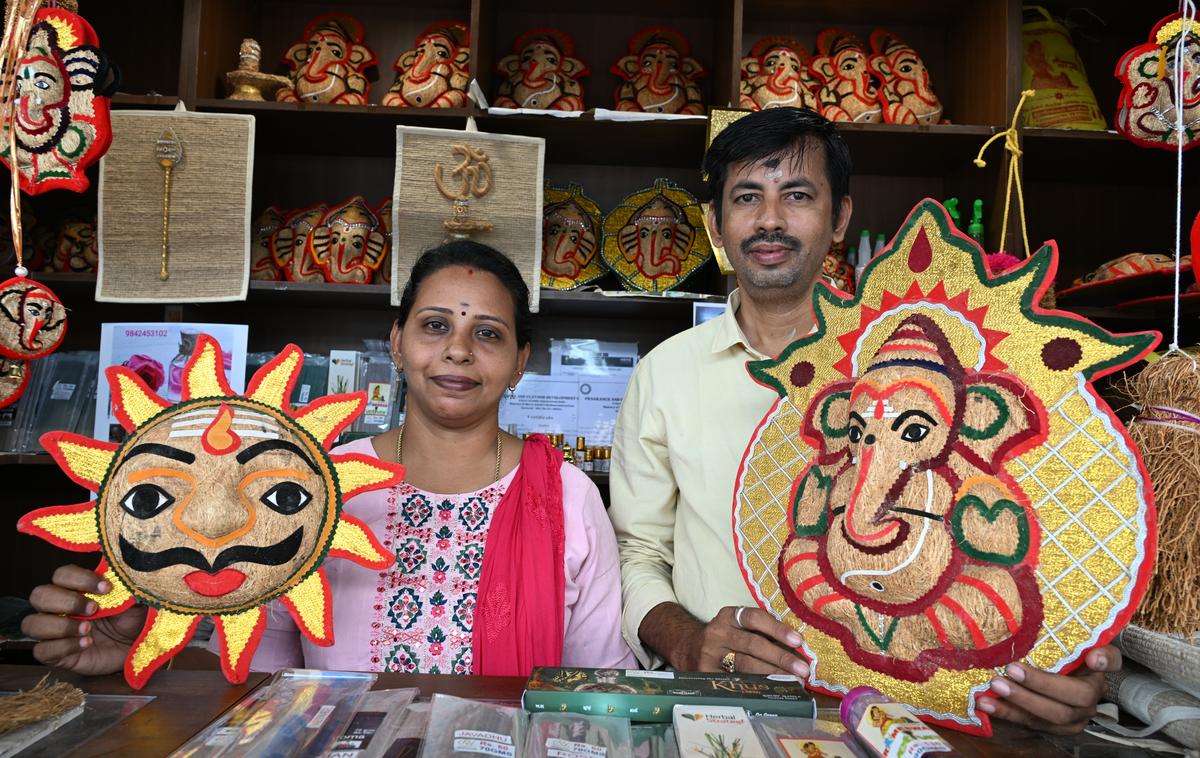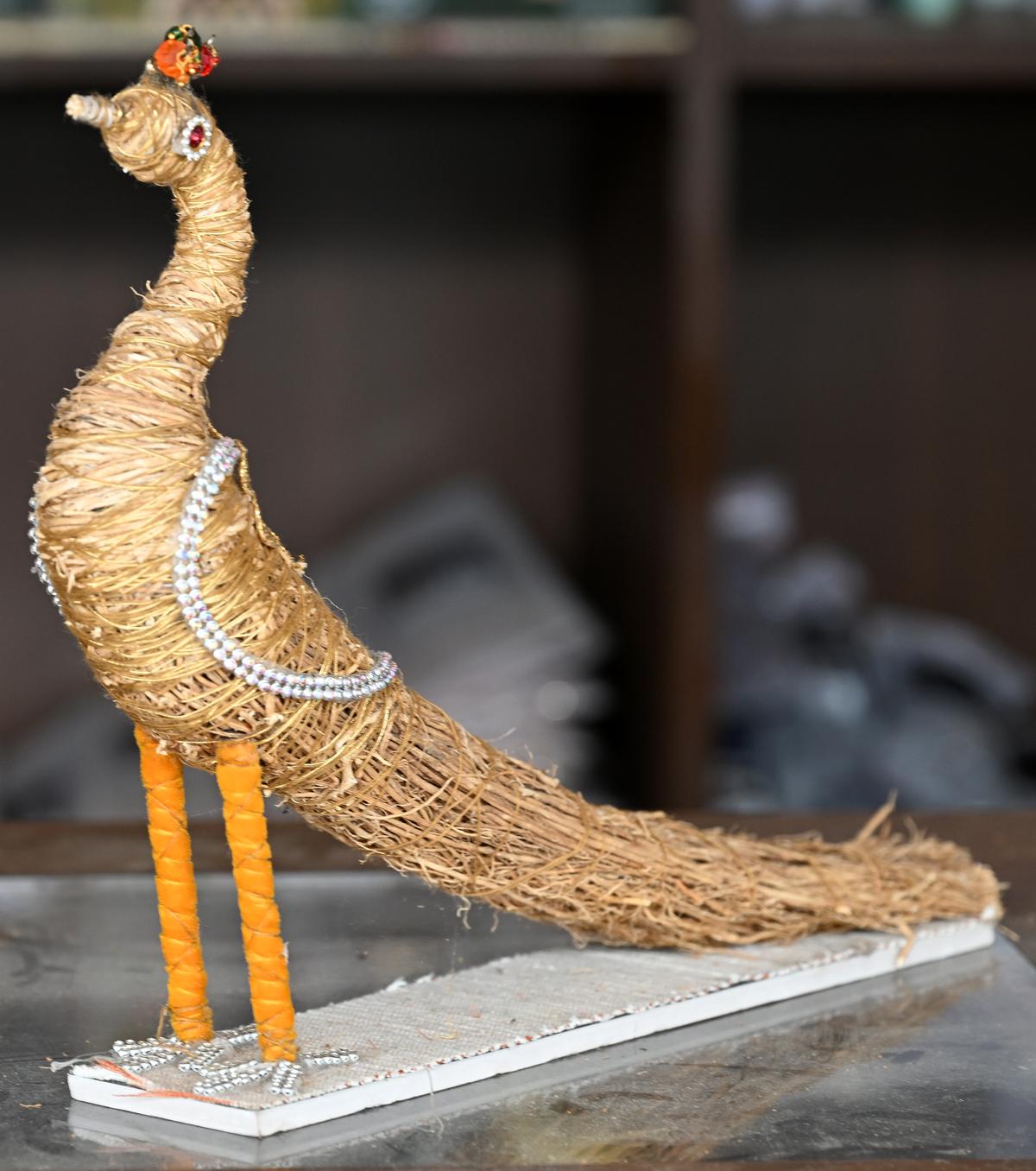Across a swathe of over 600 acres in New Chennai Township Private Limited (NCTPL) MARG Swarnabhumi, in Chengalpattu, a perennial grass has been pressed into service to lay the foundation of a net zero carbon campus of six industries and 1,300 homes.
The plant in question is Vetiver (Chrysopogon zizanioides) whose roots tend to make headlines. Derived from the Tamil word that means ‘root that is dug up’, vetiver is also known as ramaccham in Malayalam and kuruveru in Telugu. The Mughals called it ‘khus’ (not to be confused with ‘khus-khus’ or poppyseed).
The roots of the vetiver are the source of a tantalising essential oil obtained through steam distillation, which has been used in perfumes and skincare products for centuries. . It is said that King Harshavardhana of Kannauj, levied a ‘khus tax’, indicating its importance in the perfumeries of yore. Even today, a kilo of pure vetiver oil can cost upwards of ₹20,000 online.
Its evolution as a tool for environmental rehabilitation is a recent phenomenon in India. In the face of extreme weather phenomena like the recent landslides in Kerala, deep-rooted plants like vetiver can prove to be a useful ally against soil erosion.
The ‘gulabi’ strain of vetiver, sourced from Bihar, is being planted initially on 18 acres of the Swarnabhumi project. A vetiver incubation and propagation centre and the development of by-products such as cattle feedstock pellets and sustainable construction materials are also on the anvil.
“Vetiver can sequester 100-500 tonnes of carbon per hectare, outperforming many trees. It helps reduce water run-off and stabilises slopes. The unique quality of this grass is that it can also rehabilitate soil, and treat wastewater through phytoremediation. We have started sowing vetiver in the areas of our project that have been earmarked for afforestation,” says S Sampath Kumar, chief technical officer, Swarnabhumi SEZ.
The Tamil Nadu Agricultural University (TNAU) lists two types of vetiver prevalent in the country: the seeding variety of north India, that grows wild, and the non-seeding variant of south India. Farmed with the help of ‘slips’ (a propagation piece of the grass which represents a small individual plant), vetiver’s roots can grow up to a metre in three months into the ground, and require earth-movers for harvesting. The top half of the plant is used for mulching.
Grassroots action

V. C. Shreeramnath, Founder and Secretary, Rameswaram Vetiver and his wife Kavitha at One Station One Products stall selling vetiver products at the Srirangam railway station.
| Photo Credit:
M. MOORTHY
As an ardent admirer of former president APJ Abdul Kalam, V C Shreeramnath, whose parents ran a coffee shop in the Bharat Heavy Electricals Limited (BHEL) township in Tiruchi, drove an auto-rickshaw all the way to Rameswaram to attend the leader’s funeral in 2015. After briefly running a mobile bookstore specialising in Kalam’s writings in Rameswaram, Shreeramnath became interested in vetiver cultivation during the lockdown.
“I started sharing information on vetiver on my social media handles, and, through that, was introduced to ND Yogendra and V Sundaresan, senior scientists at the Council of Scientific and Industrial Research (CSIR)-Central Institute of Medicinal and Aromatic Plants (CIMAP) in Bengaluru. They advised me to think of cultivating vetiver in Rameswaram, which is traditionally known for its jasmine crop,” says Shreeramnath.
He established the Rameswaram Vetiver and Environmental Foundation, with four local farmers on board in 2019. Besides this, his wife Kavitha creates vetiver oil-based perfume blends, herbal cosmetics and handicrafts from women’s self-help groups that are put up for sale at the couple’s ‘One Station One Product’ stalls at Rameswaram and Srirangam railway stations. A ‘Rameswaram Vetiver’ showroom selling handicrafts and aroma products was recently opened in Madipakkam, Chennai as well.
CIMAP gifted the foundation 4,000 slips of ‘Samriddhi’ and ‘Dharani’ strains of vetiver to reach out to the farming community in Rameswaram after the lockdown.
Shreeramnath has also distributed over one lakh slips to tourists in Rameswaram.
“In India, most of us know about vetiver oil’s usage in religious rituals and herbal products, but not about its value in the international perfume industry. The oil should be extracted from the vetiver root within three months of its harvest. CIMAP also gifted us an oil distillation plant worth ₹8 lakh that has been installed at Paalkulam village in Ramanathapuram,” says Shreeramnath.
The roots that grow in sandy soil, are softer, but have more oil content, while those growing in hard soil are darker, and coarser in texture, he says. Vetiver by-products
An earthy aroma greets visitors to the marketing office of VA Vetiver Products, as garlands, hand fans and wall hangings of Lord Ganesha, all made with the grass, are arrayed on the shelves. Soaps and face packs made with powdered vetiver are also on display.
“Our variety is from Sivagangai, which has red soil, and the scent of the vetiver garlands can last up to four years,” says proprietor A Karuppiah, who sources his products from grower C Pandian.
The Sivagangai-based Pandian cultivates vetiver on over 15 acres, consisting of his farm and neighbouring farms too, and is known to be an innovator in the field.
The market value of vetiver changes according to its quality, says Karuppiah, who quit his job in Guyana, West Indies, to join Pandian four years ago. Prices start from ₹120 per kg and can go up to ₹800 per kilogram.

A handicraft made with vetiver grass.
| Photo Credit:
M. MOORTHY
Making their top-selling product — the vetiver garlands, used in temple rituals and home decor, is a tough job. Sun-dried grass is cut into small tufts and woven around a thick rope. Workers introduce wool patches to add colour, and then trim the garland manually. “Only experienced people can do it, because the grass is tough to handle. We cannot mechanise the production,” says Karuppiah .
Conservation effort
As a nod to the growing importance of vetiver in environmental conservation, the India Vetiver Foundation (IVF) was established in 2023 as a company with C K Ashok, P N Subramanian, M C Dominiq and Ganesan at the helm.
“Despite its widespread presence in Tamil Nadu, we feel that people are still not aware of vetiver’s role in climate conservation. For instance, Cuddalore district has dedicated over 600 acres to vetiver farming purely for root oil extraction. But the district’s farmers plant the same crop every year, and need diesel pumps for irrigation, which hits sustainability,” says IVF secretary P N Subramanian.
In 2026, IVF is planning to host a meeting to create a buzz about vetiver in Chennai, under the auspices of The International Vetiver Network (TIVN) based out of Thailand.
“Discussions are on with a group of Thai experts to visit Tamil Nadu and train women on using the shoots or leaves of vetiver. We will also give farmers 50 to 200 tillers [actively growing shoot of grass leaf or stem] to be sown according to our instructions. One tiller in a year multiplies to 10 to 15, and can even be grown in local nurseries,” says Subramanian.
#deeprooted #vetiver #ally #climate #change





